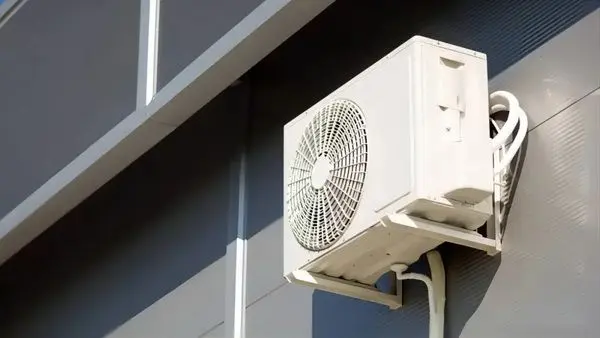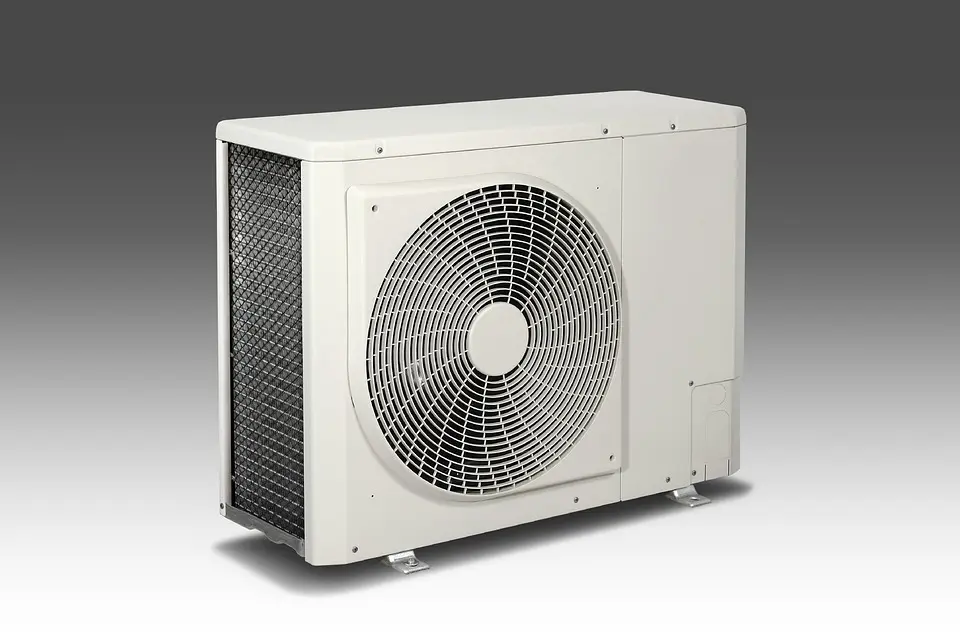AI-Driven Heat Exchanger Design: 2025 Technology Outlook

As a professional in the field, I see AI reshaping heat exchanger design by enhancing efficiency and sustainability. Smart algorithms analyze thermal systems to optimize performance. AI-driven tools are critical for addressing modern challenges, including the need for precision in systems like Copper Fin Heat Exchanger, which delivers superior thermal management across industries.
Key Takeaways
- AI helps heat exchangers work better by watching and adjusting them in real-time. This keeps them running well and lasting longer.
- AI predicts problems early, cutting downtime and repair costs. This saves money by fixing issues before they happen.
- AI improves designs by picking better materials and making things more efficiently. This makes products stronger and work better for less money.
Optimizing Heat Exchanger Efficiency with AI

Artificial intelligence has transformed how we approach heat exchanger efficiency. By leveraging real-time data, predictive analytics, and advanced simulations, I can now design systems that operate at peak performance while minimizing downtime and costs. Let me walk you through how AI achieves this.
Real-Time Performance Monitoring and Adjustments
AI enables continuous monitoring of heat exchanger performance. Sensors collect data on critical metrics like temperature, humidity, and flow velocity. These metrics allow AI algorithms to make real-time adjustments, ensuring optimal thermal management. For example, if a sudden temperature spike occurs at the exhaust, AI can immediately recalibrate the system to maintain stability.
Here’s a snapshot of the key metrics monitored during real-time operations:
| Metric | Measurement Locations | Accuracy |
|---|---|---|
| Temperature | Ambient, Inlet, Product, Exhaust | 0.2 °C |
| Relative Humidity | Ambient, Inlet, Product, Exhaust | 2% |
| Flow Velocity | Various points in the system | 0.15 m s−1 |
These precise measurements ensure that even minor inefficiencies are detected and corrected instantly. This level of control not only improves performance but also extends the lifespan of the equipment.
Predictive Maintenance and Failure Prevention
AI has revolutionized maintenance strategies. Traditional methods often rely on scheduled checks or reactive repairs. With AI, I can predict potential failures before they occur. By analyzing historical data and identifying patterns, AI pinpoints components at risk of malfunction. This proactive approach reduces downtime and maintenance costs significantly.
Consider these statistics on maintenance cost reductions achieved through AI:
| Source | Reduction in Maintenance Costs | Additional Insights |
|---|---|---|
| Deloitte | 25% | Reduction in breakdowns by 70% |
| Vidyatec.com | Up to 40% | Equipment stoppages reduced by 30-50%, equipment life prolonged by 20-40% |
These figures highlight the tangible benefits of predictive maintenance. By preventing unexpected breakdowns, I can ensure uninterrupted operations and lower overall expenses.
Enhanced Computational Fluid Dynamics (CFD) Simulations
AI has also elevated the capabilities of Computational Fluid Dynamics (CFD) simulations. Traditional CFD methods, while effective, often require significant computational resources and time. AI-driven simulations, on the other hand, deliver faster and more accurate results. This allows me to test multiple design iterations in a fraction of the time.
Recent studies demonstrate the impact of AI on CFD performance:
| Study | Key Findings | Performance Metrics |
|---|---|---|
| AI-based SPH Emulator | Emulates SPH momentum equation, aligns with traditional methods | Position matching of dam break front over time |
| ML in CFD | Enhances accuracy and efficiency, achieves speedups | Reduced computational cost, improved predictive power |
| Machine Learning Applications | Accelerates fluid behavior predictions, improves designs | Enhanced simulation speed and accuracy |
These advancements enable me to optimize heat exchanger designs with unprecedented precision. By simulating fluid dynamics more efficiently, I can create systems that maximize heat transfer while minimizing energy consumption.
Tip: AI-driven CFD simulations are not just faster; they also provide deeper insights into fluid behavior, enabling smarter design decisions.
AI Integration with Renewable Energy Systems
Heat Exchanger Design for Solar and Wind Applications
AI plays a pivotal role in designing heat exchangers tailored for renewable energy systems like solar and wind. I have seen how AI-driven tools optimize heat transfer processes in solar thermal plants by analyzing weather patterns and adjusting system parameters in real time. For wind energy, heat exchangers ensure efficient cooling of turbine components, which prevents overheating and extends equipment lifespan.
AI also enhances grid operations by providing proactive decision support and predictive online control. This improves efficiency and reliability while reducing the risk of blackouts. By integrating AI, I can help create a cyber-resilient energy system that ensures clean electricity access for all communities.
Note: AI's ability to model and optimize renewable systems quickly is paving the way for a fully clean electricity system by 2035.
Reducing Carbon Footprints with AI-Optimized Systems
AI-optimized heat exchangers significantly reduce carbon footprints by improving energy efficiency. I have observed how AI applications minimize energy waste by fine-tuning system performance. Research shows a 1% increase in AI application leads to a 0.0395% reduction in carbon emission intensity. This demonstrates the tangible impact of AI on sustainability.
Moreover, AI identifies inefficiencies in thermal systems and suggests corrective actions. This proactive approach not only reduces emissions but also aligns with global efforts to combat climate change. The correlation between AI and lower carbon intensity highlights its potential to drive environmental progress.
Supporting Energy Independence Through Smart Design
Smart heat exchanger designs powered by AI contribute to energy independence. By optimizing thermal systems for renewable energy sources, I can reduce reliance on fossil fuels. AI-driven designs ensure maximum energy utilization, making renewable systems more viable and cost-effective.
Unpredictable energy demands often challenge renewable systems. AI mitigates this by forecasting energy needs and adjusting operations accordingly. This adaptability supports a stable energy supply, empowering communities to achieve greater energy autonomy.
Tip: Embracing AI in renewable energy systems not only enhances performance but also fosters sustainability and independence.
Advancements in Material Science Through AI
AI-Driven Material Selection for Durability and Performance
AI has revolutionized material selection for heat exchangers. By analyzing vast datasets, AI identifies materials that offer the best combination of durability and thermal performance. This approach ensures that every component withstands operational stresses while maintaining efficiency. I’ve seen how AI-driven selection reduces procurement costs and improves supply chain reliability.
For instance, AI optimizes sourcing strategies, leading to measurable cost savings:
| Metric | Value |
|---|---|
| Lower procurement costs | 12-15% |
| Fewer supply disruptions | 30% |
| Higher margins with TCO strategy | 18% |
| Savings per contract | 12% |
| Higher margin retention | 18% |
These figures highlight how AI enhances both financial and operational outcomes, making it indispensable for modern material selection.
Designing Novel Materials for Extreme Environments
Extreme environments demand materials that can endure high temperatures, pressure, or corrosive conditions. AI accelerates the discovery of such materials by simulating performance under these conditions. I’ve observed how AI-driven methodologies like Bayesian optimization and additive manufacturing tailor materials for specific challenges.
Key advancements include:
- Autonomous experimentation frameworks, such as ARMD, integrate mission-specific requirements into material discovery.
- Techniques like blown powder directed energy deposition create multiple unique samples simultaneously.
- Laser-based testing enhances fabrication and testing speed under extreme conditions.
These innovations enable rapid development of materials that meet the demands of industries like aerospace and energy.
Cost-Effective Solutions with AI-Optimized Materials
AI doesn’t just improve performance—it also drives cost efficiency. By predicting material behavior and optimizing designs, AI minimizes waste and reduces production costs. I’ve noticed how this approach aligns with sustainability goals, as it promotes resource-efficient manufacturing. The result is a win-win: high-performing materials at a lower cost.
Tip: Leveraging AI for material optimization ensures durability, performance, and cost savings, making it a game-changer for heat exchanger design.
The Role of Copper Fin Heat Exchangers in AI-Driven Design

Advantages of Copper Fin Heat Exchangers in Thermal Efficiency
Copper fin heat exchangers have become a cornerstone of modern thermal management systems. Their superior thermal conductivity and durability make them an ideal choice for a wide range of applications. I have observed how their design ensures efficient heat transfer, even in demanding environments. Copper, as a material, offers excellent resistance to corrosion, which enhances the longevity of these systems.
The unique properties of copper fins allow for better heat dissipation compared to other materials. This results in reduced energy consumption and improved system performance. For instance, in refrigeration systems, copper fin heat exchangers maintain optimal cooling efficiency while minimizing operational costs. Their compact design also makes them suitable for applications where space is limited.
Note: The high thermal efficiency of copper fin heat exchangers directly contributes to energy savings and sustainability, making them a preferred choice in industries focused on reducing carbon footprints.
AI-Optimized Design for Copper Fin Heat Exchangers
Artificial intelligence has revolutionized the design process for copper fin heat exchangers. By leveraging AI algorithms, I can analyze complex thermal systems and identify the most efficient configurations. AI tools enable me to simulate various design scenarios, optimizing parameters such as fin spacing, thickness, and airflow patterns.
One of the most significant advantages of AI-driven design is the ability to predict system performance under different operating conditions. For example, I can use AI to model how a copper fin heat exchanger will perform in extreme temperatures or high-pressure environments. This predictive capability ensures that the final design meets both performance and durability requirements.
AI also streamlines the manufacturing process. By analyzing production data, AI identifies potential inefficiencies and suggests improvements. This results in faster production times and reduced material waste. The integration of AI into the design and manufacturing of copper fin heat exchangers has set a new standard for efficiency and innovation.
Tip: AI-driven design not only enhances the performance of copper fin heat exchangers but also reduces production costs, making advanced thermal solutions more accessible.
senjun’s Contributions to Copper Fin Heat Exchanger Innovation
Ningbo Senjun New Materials Co., Ltd. has emerged as a leader in the development of copper fin heat exchangers. The company’s commitment to research and innovation has resulted in cutting-edge solutions for various industries. I have seen how senjun’s products excel in applications such as refrigerators, freezers, and medical ultra-low temperature refrigerators.
Senjun leverages advanced manufacturing techniques to produce high-quality copper fin heat exchangers. Their focus on precision and durability ensures that each product meets the highest standards of performance. By incorporating AI into their design and production processes, senjun has achieved remarkable efficiency gains. This approach not only enhances product quality but also aligns with global sustainability goals.
The company’s dedication to innovation extends beyond product development. Senjun actively collaborates with industry partners to explore new applications for copper fin heat exchangers. Their efforts have positioned them as a trusted name in the field of thermal management.
Callout: Senjun’s expertise in copper fin heat exchangers demonstrates the transformative potential of combining advanced materials with AI-driven design.
Future Trends in AI-Driven Heat Exchanger Design
Continuous Learning Systems for Adaptive Design
AI-driven heat exchanger designs are evolving with continuous learning systems. These systems analyze historical data to refine performance and adapt to changing operational conditions. I have seen how real-time optimization, powered by dynamic data inputs, enhances heat exchange processes. For instance, AI can adjust system parameters instantly to maintain efficiency during fluctuating workloads. Predictive maintenance also benefits from these systems, as AI forecasts maintenance needs, reducing downtime and improving reliability.
Tip: Continuous learning systems ensure that heat exchangers remain efficient and reliable, even as operational demands shift.
Multidisciplinary Approaches Combining AI and Engineering
The integration of AI with engineering principles is unlocking new possibilities in heat exchanger design. Machine learning algorithms predict potential failures in mechanical systems, enabling proactive maintenance. I’ve observed how similar methodologies optimize vehicle designs in the automotive industry by analyzing past performance data. In thermodynamics, AI has improved heat exchanger performance by uncovering non-linear relationships between parameters, achieving over 15% efficiency gains. This interdisciplinary approach accelerates innovation and ensures robust designs.
Note: Combining AI with engineering expertise creates smarter, more efficient systems that adapt to complex challenges.
The Role of Digital Twins in Future Heat Exchanger Development
Digital twins are transforming how I approach heat exchanger development. These virtual replicas simulate real-world operations, allowing me to test designs under various conditions without physical prototypes. By leveraging AI, digital twins predict system behavior, identify inefficiencies, and suggest improvements. This reduces development time and costs while enhancing design accuracy. Digital twins also enable continuous monitoring, ensuring optimal performance throughout the system’s lifecycle.
Callout: Digital twins, powered by AI, are revolutionizing design processes, making them faster, smarter, and more cost-effective.
AI has revolutionized heat exchanger design, transforming thermal management with unprecedented efficiency. For example:
- 4,000 CFD simulations created a robust cooling database.
- AI reduced simulation times from 8 hours to 0.5 seconds.
- Optimized cooling channels improved energy efficiency.
Companies like Siemens leverage AI to automate designs, cutting costs and boosting performance. Embracing AI ensures a competitive edge.
FAQ
What industries benefit the most from AI-driven heat exchanger design?
Industries like renewable energy, refrigeration, aerospace, and medical equipment benefit significantly. AI optimizes thermal efficiency, reduces costs, and enhances system reliability across these sectors.
How does AI improve heat exchanger durability?
AI selects materials with optimal properties for specific conditions. It predicts wear patterns and suggests designs that withstand extreme environments, ensuring longer equipment lifespans.
Tip: AI-driven material selection minimizes failures, saving time and resources.
Can AI help reduce energy consumption in heat exchangers?
Absolutely! AI fine-tunes system parameters in real time, ensuring maximum energy efficiency. This reduces operational costs and aligns with sustainability goals. 🌱
Note: AI-optimized systems are key to achieving energy independence and reducing carbon footprints.


















